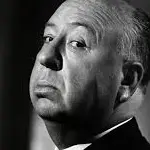In 1954, Alfred Hitchcock once again demonstrated why he was awarded the title of “Master of Suspense” with Rear Window. He produced and directed the story in which we follow how professional photographer L.B. “Jeff” Jefferies, played by James Stewart, finds himself trying to solve a crime-like situation with the help of his girlfriend Lisa and nurse Stella while recovering from an accident that leaves him in a wheelchair. “Jeff” Jefferies, played by James Stewart, finds himself trying to solve a crime-like situation with the help of his girlfriend Lisa and his nurse Stella while recovering from an accident that leaves him in a wheelchair with a broken leg, he has taken up the habit of watching his neighbors through the back window of his apartment, having the advantage of them leaving their own windows open due to a severe heat wave. The 112-minute American film, co-starring Grace Kelly as Lisa Freemont, Thelma Ritter as Stella, Wendell Corey as Tom Doyle, and Raymond Burr as Lars Thorwald, debuted at the Venice Film Festival and has been hailed by critics and film buffs as one of Hitchcock's best works.
With the screenplay written by John Michael Hayes, music by Franz Waxman, and cinematography by Robert Burks, Rear Window succeeds exceptionally well in telling a mystery story from a single location. This may be the most appealing aspect of the story; it doesn't change locations once, every time we see another set it's through Jeff's eyes, binoculars, or camera lens. Right off the bat, the wide tracking shot of the view Jeff has describes everything we will see through the character's eyes and situates us. This is a great lesson for anyone who wants to tell compelling stories because it shows us that you don't need a huge production to develop a good story. In addition, it also teaches us the importance of actions in getting to know a character. Without going into Jeff's neighbors' apartments, we can get to know a little about them, and other than Mr. Thorwald, we see it clearly with Miss Lonelyhearts, the composer, the dancer, and the newlywed couple. From what little we can see from Jeff's window, each character shows us a very intimate part of their lives with their day-to-day activities (of course, thanks to Jeff's meddling).

Of course, for entertainment purposes, the film successfully achieves its goal, at least throughout the second half, of keeping us with the mystery and waiting for the enigma to be solved. But what about the conflict if we think of it as a real-world situation? As a circumstance in which we could be involved. I think we've all been tempted to watch anyone through the window (not in a morbid sense), but from watching once to making it a hobby, there's a gap called being weird and a lack of boundaries perception. I wouldn't call it stalking simply because his intentions at no time are evil, he doesn't hurt anyone, but leaving aside his broken leg and what he accomplished, he could have found something better to do than spy on his neighbors. A craft, perhaps?
Let's take it as a lesson, if you want to call it that, about the consequences that disrespecting the privacy of others can bring us even though your intentions are good. I guess at a certain point, Jeff found himself in a dilemma between doing what he thought was right and intruding, and the good thing is that, in this case at least, his decision resulted in a 70% success rate. I say, 30% subtracted because not everything exactly resulted in victory.

I must say that the aspect I liked most about the photography was the view through the binoculars and the lens. It is extraordinary the reality that each one of them brings, as we can differentiate exactly how the image looks with each one of them. Absolutely everything that sounded matched perfectly, from the naturally produced sounds to the diegetic music provided by our composer neighbor. If I had to mention flaws they would be minimal. I think anyone would agree that the visual effect depicting Jeff's fall, leaves much to be desired, so much that no one seriously believes it happened. And someone could defend it by appealing to the argument of the limited technology of the time, but I think a couple of decades earlier, Chaplin or Keaton achieved this with more success. On the other hand, I see a bit of a problem with the lighting as far as Jeff is concerned. The whole time it seemed to me that anyone would have a very clear view of his apartment, as he appears to be in plain sight. But the moment Mr. Thorwald finally becomes aware of his presence, he turns off the light and it's completely dark, which it didn't seem to be during his entire time on watch. I guess that will be a question mark.
Overall, I really enjoyed watching this film. I think it's a phenomenal lesson in filmmaking techniques and compelling storytelling, so I can only applaud both the director and the actors, their work came through beautifully on the screen and, more importantly, in history.



















































View replies 0